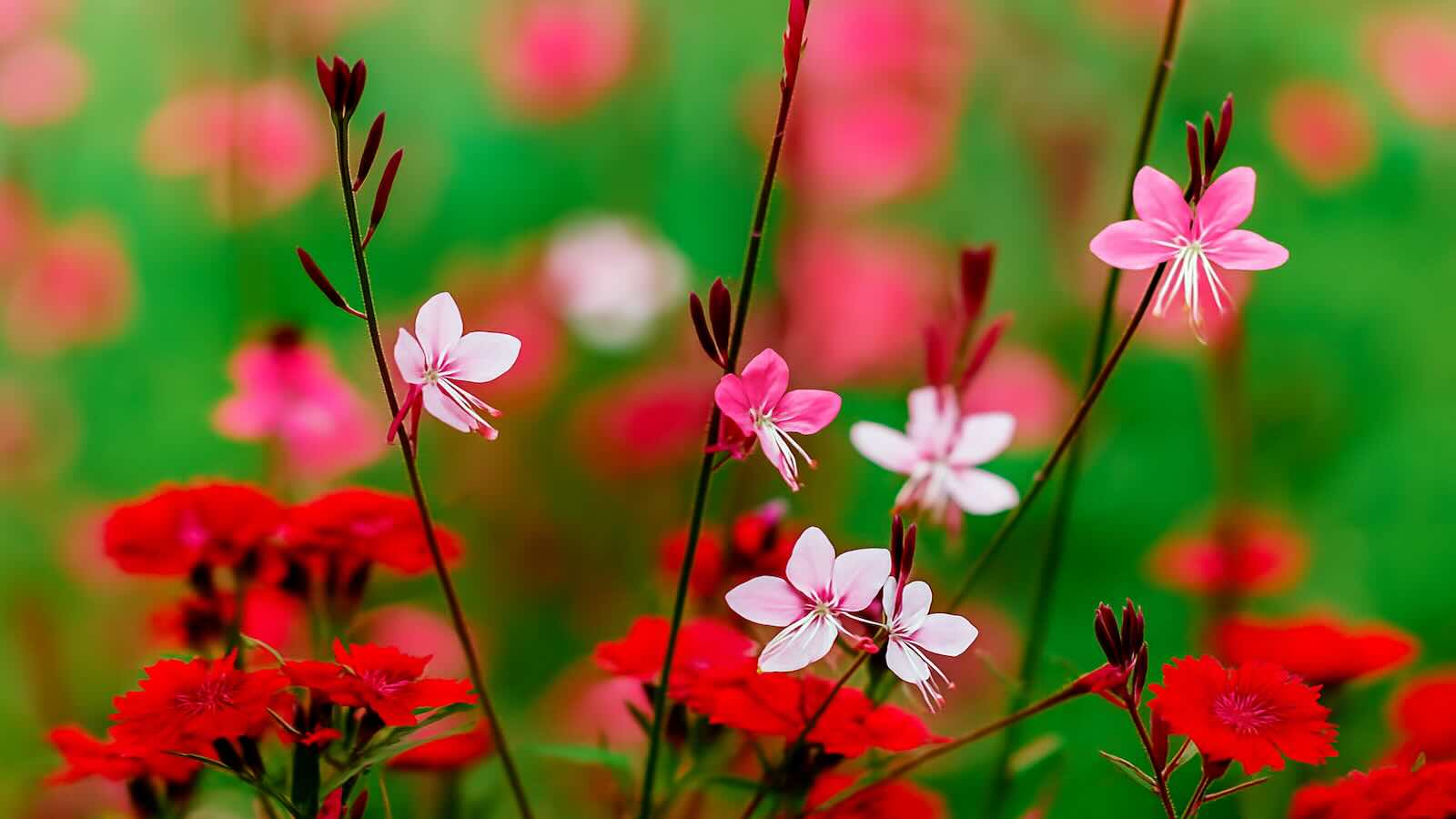Looking for a plant that thrives on neglect and still blooms for months? I stumbled upon Gaura lindheimeri during a visit to a gardening friend. I was astonished to see this hardy plant flourish in tough conditions where most others would perish. Picture soft, fluttering blossoms swaying in the wind, growing in neglected gravel beds. Despite zero irrigation, this resilient bloomer thrives continuously. Here’s why Gaura is a must-have in your garden—even for the least experienced.
What exactly is Gaura lindheimeri?
Known also as the “butterfly flower” or “Lindheimer’s beeblossom,” Gaura is a perennial hailing from southern U.S. states such as Texas and Louisiana. It belongs to the Onagraceae family, sharing roots with plants like fuchsia. Its increasing popularity in Europe stems from its adaptability and beauty.
The name “Lindheimeri” honors German botanist Ferdinand Lindheimer, who cataloged it in the 1800s. In its native terrain, Gaura thrives in sun-drenched, rocky soils—making it naturally drought-resistant and tolerant of poor conditions.
What makes Gaura so tough?
This plant owes its resilience to several biological traits:
-
Deep-rooted system: It can burrow up to 1.5 meters deep to find moisture.
-
Hairy leaves: Minimize water loss through evaporation.
-
Cold resistance: Some types endure temperatures down to -15°C.
-
Poor soil adaptability: It blooms beautifully in lean, rocky terrain.
These advantages allow Gaura to flourish in gravel beds, borders, and other dry, neglected garden spaces.
Non-stop blooms for four months
From June to October—and often longer—Gaura continuously sprouts new flowers. White or pink, depending on the type, its blooms appear on tall, flexible stems that dance gracefully in the wind, earning its nickname “butterfly flower.”
Goodbye to energy dependence – Alaska discovers more than 1,200 TWh hidden under the ice, and the find could change the world
Goodbye Pepsi: Costco makes a major decision that completely changes its strategy with sugary drinks
As older flowers drop, fresh ones open daily, keeping the plant vibrant for the entire summer season.
How to grow Gaura at home
Even beginners can cultivate Gaura with minimal effort. Focus on these basics:
Sun and soil requirements
Full sun is key for abundant flowers. Gaura prefers dry, well-drained, and even nutrient-poor soil. Overwatering is its worst enemy. Avoid soggy ground, especially in winter, which could rot its roots. Gravel gardens are ideal for this reason.
Planting tips
The ideal time is spring or early autumn. Space each plant 40–50 cm apart.
-
Dig a hole slightly wider than the root ball.
-
Add gravel or sand at the base for better drainage.
-
Plant at the original pot depth.
-
Press down gently and water thoroughly to help roots settle.
Care made easy
Once in place, Gaura is nearly self-sufficient.
-
Watering: Needed only at planting. After that, rainfall is enough.
-
Fertiliser: Not recommended; rich soil causes too much foliage.
-
Pruning: Cut back dry stems to 10 cm in late winter.
-
Pests: Rarely affected.
Gaura does self-seed, but rogue seedlings are easy to remove.
How to use Gaura in your landscape
Thanks to its airy structure and elegant blooms, Gaura fits into almost any garden style. Here are some ideas:
In flower beds
Group it with other sun-loving plants like lavender or salvia. Its flowing shape adds contrast and softness. Plant behind shorter varieties for maximum impact.
In gravel gardens
Ideal in gravel designs, it forms islands of blossoms floating above the stones. Perfect companions include ornamental grasses and succulents. It’s even used to transform bland driveways into floral displays with zero upkeep.
In containers
Though rarely considered for pots, Gaura does well in containers at least 40 cm deep. Try dwarf types like ‘Crimson Butterflies’. Use a draining mix: 2/3 potting soil and 1/3 coarse sand or pozzolan.
A climate-friendly choice
With environmental concerns and water limits rising, Gaura stands out as a flower-friendly, eco-smart plant.
Water efficiency
In drought-prone areas, it continues blooming without irrigation. Once rooted, natural rainfall suffices—even in hot climates.
Boosting pollinators
Though native to the U.S., Gaura integrates well in European gardens. Bees and butterflies love its nectar-rich blooms, supporting biodiversity.
How detonating a nuclear bomb could protect planet Earth
Buys a coal mine for $2 million and discovers metals worth up to $36 billion
Low-impact gardening
With a lifespan of 5–8 years, Gaura reduces waste. It requires no fertiliser, minimal water, and no chemical treatments—lowering your garden’s carbon impact.
Tips for even more blooms
While naturally floriferous, you can still enhance its output:
-
Remove spent blooms in early summer to stimulate new growth.
-
Avoid feeding—excess nutrients stifle flowering.
-
Divide clumps every few years for renewed vigor.
-
In damp regions, apply a dry mulch for root protection.
Fun fact: Slight water stress may trigger even more flowers. Sometimes, less really is more.
The ideal plant for low-maintenance gardeners
Whether you’re a novice, always away, or just want a carefree garden, Gaura lindheimeri is the answer. Drought-tolerant, low-maintenance, and ever-flowering, it adapts to today’s sustainable gardening needs.
So next time you browse plants, give Gaura a try. It might just turn a forgotten corner of your garden into a lively haven of dancing blossoms—without demanding anything in return.
